Henry Lieberman
Can Language Models Take A Hint? Prompting for Controllable Contextualized Commonsense Inference
Oct 03, 2024


Abstract:Generating commonsense assertions within a given story context remains a difficult task for modern language models. Previous research has addressed this problem by aligning commonsense inferences with stories and training language generation models accordingly. One of the challenges is determining which topic or entity in the story should be the focus of an inferred assertion. Prior approaches lack the ability to control specific aspects of the generated assertions. In this work, we introduce "hinting," a data augmentation technique that enhances contextualized commonsense inference. "Hinting" employs a prefix prompting strategy using both hard and soft prompts to guide the inference process. To demonstrate its effectiveness, we apply "hinting" to two contextual commonsense inference datasets: ParaCOMET and GLUCOSE, evaluating its impact on both general and context-specific inference. Furthermore, we evaluate "hinting" by incorporating synonyms and antonyms into the hints. Our results show that "hinting" does not compromise the performance of contextual commonsense inference while offering improved controllability.
Adversarial Transformer Language Models for Contextual Commonsense Inference
Feb 10, 2023

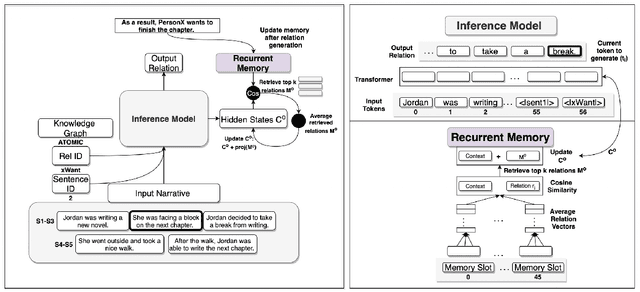
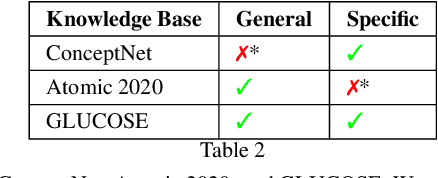
Abstract:Contextualized or discourse aware commonsense inference is the task of generating coherent commonsense assertions (i.e., facts) from a given story, and a particular sentence from that story. Some problems with the task are: lack of controllability for topics of the inferred facts; lack of commonsense knowledge during training; and, possibly, hallucinated or false facts. In this work, we utilize a transformer model for this task and develop techniques to address the aforementioned problems in the task. We control the inference by introducing a new technique we call "hinting". Hinting is a kind of language model prompting, that utilizes both hard prompts (specific words) and soft prompts (virtual learnable templates). This serves as a control signal to advise the language model "what to talk about". Next, we establish a methodology for performing joint inference with multiple commonsense knowledge bases. Joint inference of commonsense requires care, because it is imprecise and the level of generality is more flexible. You want to be sure that the results "still make sense" for the context. To this end, we align the textual version of assertions from three knowledge graphs (ConceptNet, ATOMIC2020, and GLUCOSE) with a story and a target sentence. This combination allows us to train a single model to perform joint inference with multiple knowledge graphs. We show experimental results for the three knowledge graphs on joint inference. Our final contribution is exploring a GAN architecture that generates the contextualized commonsense assertions and scores them as to their plausibility through a discriminator. The result is an integrated system for contextual commonsense inference in stories, that can controllably generate plausible commonsense assertions, and takes advantage of joint inference between multiple commonsense knowledge bases.
Lensing Machines: Representing Perspective in Latent Variable Models
Jan 20, 2022Abstract:Many datasets represent a combination of different ways of looking at the same data that lead to different generalizations. For example, a corpus with examples generated by different people may be mixtures of many perspectives and can be viewed with different perspectives by others. It isnt always possible to represent the viewpoints by a clean separation, in advance, of examples representing each viewpoint and train a separate model for each viewpoint. We introduce lensing, a mixed initiative technique to extract lenses or mappings between machine learned representations and perspectives of human experts, and to generate lensed models that afford multiple perspectives of the same dataset. We apply lensing for two classes of latent variable models: a mixed membership model, a matrix factorization model in the context of two mental health applications, and we capture and imbue the perspectives of clinical psychologists into these models. Our work shows the benefits of the machine learning practitioner formally incorporating the perspective of a knowledgeable domain expert into their models rather than estimating unlensed models themselves in isolation.
RetroGAN: A Cyclic Post-Specialization System for Improving Out-of-Knowledge and Rare Word Representations
Aug 30, 2021
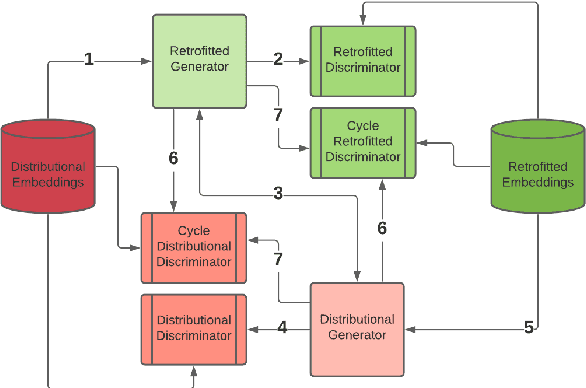

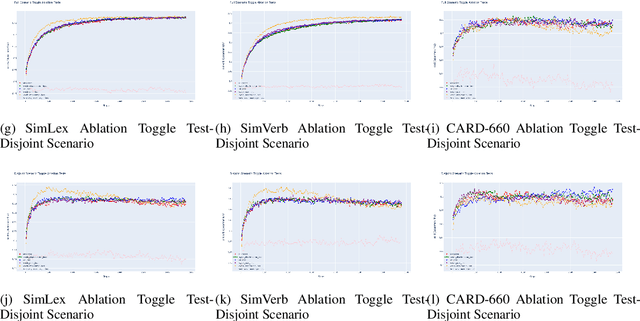
Abstract:Retrofitting is a technique used to move word vectors closer together or further apart in their space to reflect their relationships in a Knowledge Base (KB). However, retrofitting only works on concepts that are present in that KB. RetroGAN uses a pair of Generative Adversarial Networks (GANs) to learn a one-to-one mapping between concepts and their retrofitted counterparts. It applies that mapping (post-specializes) to handle concepts that do not appear in the original KB in a manner similar to how some natural language systems handle out-of-vocabulary entries. We test our system on three word-similarity benchmarks and a downstream sentence simplification task and achieve the state of the art (CARD-660). Altogether, our results demonstrate our system's effectiveness for out-of-knowledge and rare word generalization.
Revisiting the Prepositional-Phrase Attachment Problem Using Explicit Commonsense Knowledge
Feb 05, 2021
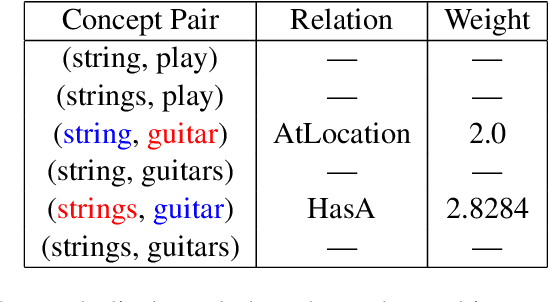


Abstract:We revisit the challenging problem of resolving prepositional-phrase (PP) attachment ambiguity. To date, proposed solutions are either rule-based, where explicit grammar rules direct how to resolve ambiguities; or statistical, where the decision is learned from a corpus of labeled examples. We argue that explicit commonsense knowledge bases can provide an essential ingredient for making good attachment decisions. We implemented a module, named Patch-Comm, that can be used by a variety of conventional parsers, to make attachment decisions. Where the commonsense KB does not provide direct answers, we fall back on a more general system that infers "out-of-knowledge-base" assertions in a manner similar to the way some NLP systems handle out-of-vocabulary words. Our results suggest that the commonsense knowledge-based approach can provide the best of both worlds, integrating rule-based and statistical techniques. As the field is increasingly coming to recognize the importance of explainability in AI, a commonsense approach can enable NLP developers to better understand the behavior of systems, and facilitate natural dialogues with end users.
 Add to Chrome
Add to Chrome Add to Firefox
Add to Firefox Add to Edge
Add to Edge